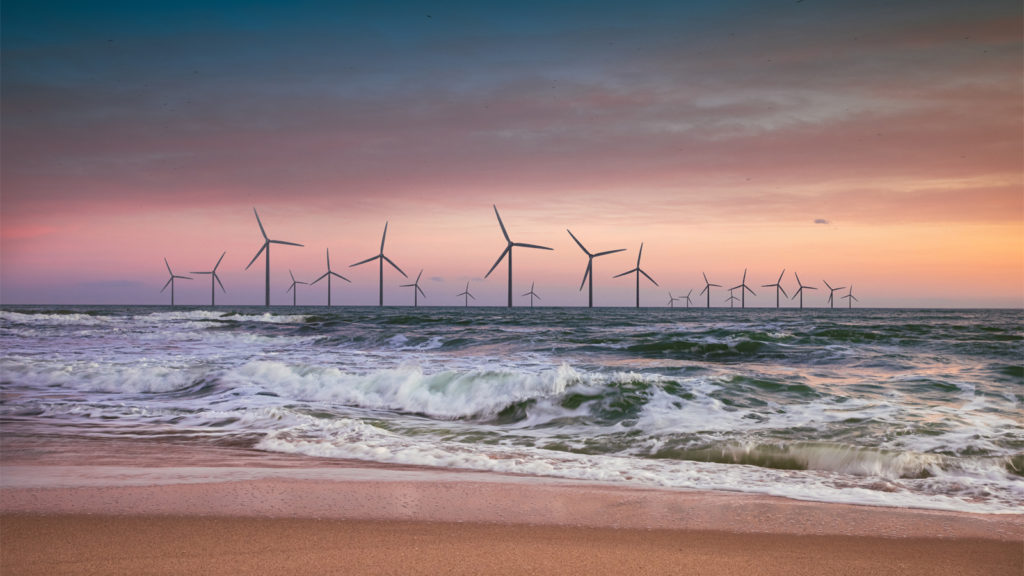It was a real pleasure to attend the joint Scottish Renewables and RenewableUK Floating Offshore Wind Conference (FLOW21) in Aberdeen last month. Not only was it great to see all the fantastic work being done to develop Floating Offshore Wind (FLOW) and feel the passion and energy to drive this forward, but it was also fantastic to get out and meet our clients, partner organisations and friends face-to-face after lockdown. Oh, how we’ve missed that!
There were some really interesting discussions around the ambitions, opportunities and limitations for FLOW. Topics such as capital costs, innovation, supply chain, access to talent and the consenting challenges were echoed throughout the sessions. Whilst a hugely positive session, we left the conference with a slight sense of missed opportunity. There are three key issues which we consider will be fundamental to the success of FLOW which we didn’t hear being discussed and these are outlined below:
Getting to Grid – the too hard pile?
What was notably missing from the list of challenges that FLOW developers are and will be facing to realise their projects is the challenge of connection onto the National Grid. The National Grid is, in the most part, an onshore entity and thus projects will not only compete with fixed offshore wind developments but with the faster moving onshore energy industry. Leasing rounds which are spatially concentrated will exert multiple points of pressure on this constantly developing transmission infrastructure adding even further complexity.
To realise the gigawatts of energy that FLOW can offer, access to grid needs to be discussed strategically and with an end game in sight. What FLOW21 has done is demonstrate the gumption and potential for collaboration within this market. FLOW developers should consider leveraging this into a joined-up grid approach. This could be through aggregation of grid connections at local scale, or it might be through lobbying at an industry scale. For now, it poses a challenge that needs to be answered through a strategic, practical and realistic approach to connection by developers, operators and regulators alike.
Risk reduction – an opportunity missed?
FLOW presents the opportunity to either eliminate or reduce some of the major risks associated with fixed offshore wind. For example, the triangular floating hull concept being considered by some could provide an opportunity to remove the transformer from the Wind Turbine Generator (WTG) tower and place on the opposite corner to the WTG. A transformer fire is one of the biggest risks inherent within a WTG as it most likely necessitates escape, evacuation and rescue out the hatch at the back of the nacelle down into the sea putting technicians and recovery crews at considerable risk. Moving the transformer away from the WTG significantly reduces this risk, as it does on some onshore developments. Another significant risk associated with fixed offshore wind is personnel transfer from vessel to WTG. The third point on the triangular floating hull could provide space for a more effective (and safer) personnel transfer arrangement.
Clearly these risk reduction benefits need to be weighed-up against the cost, time, inconvenience etc. of implementing them, but the point is that there is a responsibility on designers and developers to proactively consider potential risk reduction opportunities wherever available. It is hugely important that FLOW is not blinkered by its enthusiasm to deliver projects, e.g. by taking the simplest and quickest route of bolting an established WTG model onto a floating foundation. Rather, FLOW should take a step back and positively embrace these differences. Not only will this make it safer, but it will allow FLOW to evolve and play its role in supporting the energy transition in the most efficient and cost-effective way it possibly can. The desire to achieve this objective was certainly a message that came across loud and clear at FLOW21.
The Oil & Gas Legacy – is it going with the FLOW?
We firmly believe that FLOW can and should benefit from the oil and gas legacy covering assets, knowledge and experience.
In terms of assets, export pipelines that are no longer required for hydrocarbon transport could be repurposed to route export cables onshore. Clearly there are significant asset integrity and engineering challenges that must be overcome to enable this but, if they can, this presents a range of benefits not least by minimising the environmental impact of laying new cables. Also, “topsides” could be repurposed as electrical substations and operational control centres delivering considerable cost and efficiency savings, provided the obvious asset integrity challenges can be overcome.
The oil and gas industry has over 50 years of experience of operation in harsh offshore environments including floating structures and anchorage. This experience is directly relevant to FLOW as is their strong focus on safety and energy security.
FLOW must not reinvent the wheel. Embracing the oil and gas legacy will be key to its success. However, this can only be achieved through open, constructive collaboration between both sectors. In a competitive marketplace where they have very different goals and objectives, opportunities to do this are scarce. It is up to industry bodies, encouraged by governments, to facilitate this within what is a finite window of opportunity. The clock is very much ticking.

